This post may contain affiliate links. As an Amazon Influencer, I earn from qualifying purchases.
This Gluten-Free Pizza Crust is the perfect fluffy yet crispy base for all your favorite pizza toppings. With this vegan gluten-free recipe, no one has to miss out on Friday pizza night!
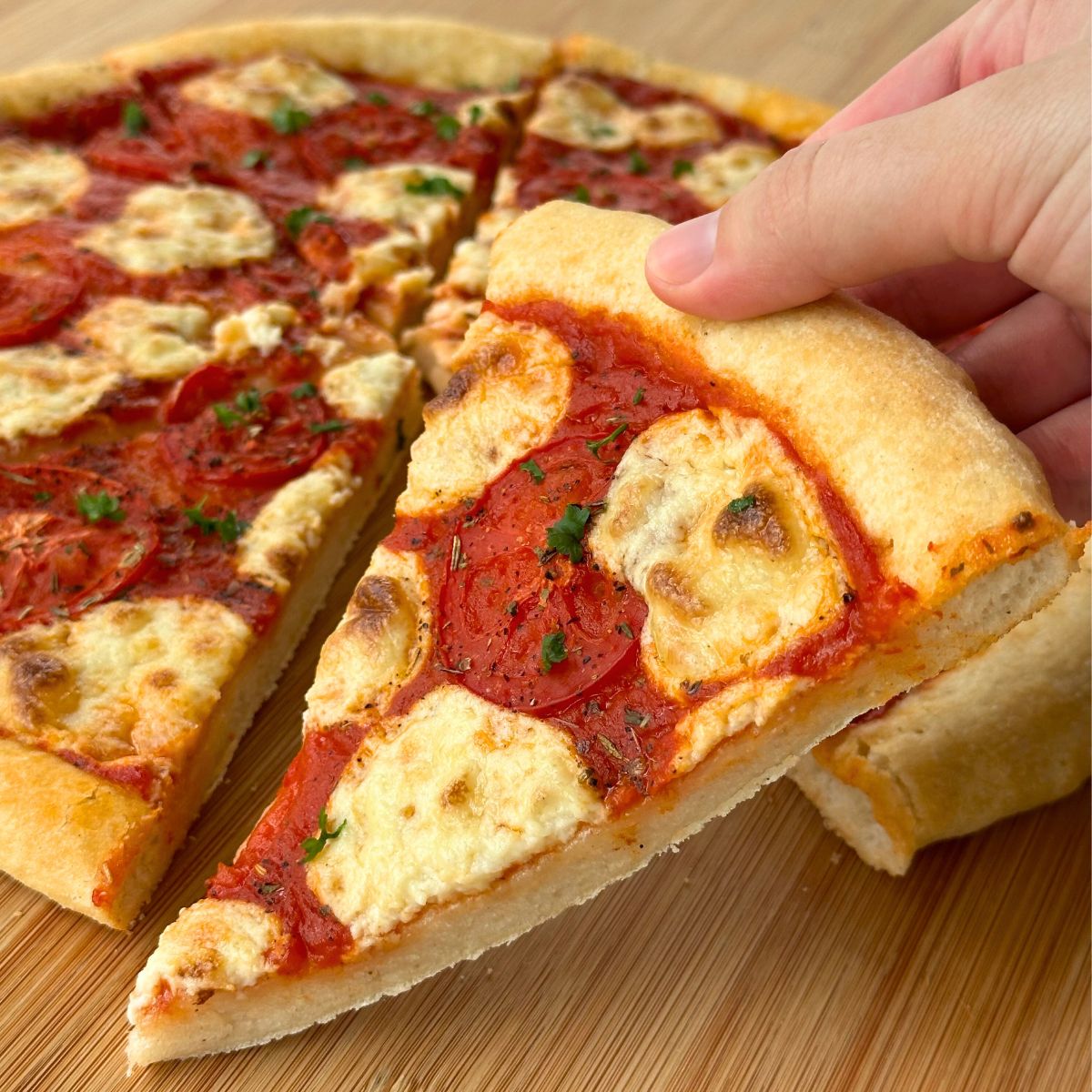
While quinoa pizza crust is perfect for those who love a thin & crispy crust with a nutty, savory flavor, this recipe is a game changer if you’ve been looking for a classic pizza.
You can enjoy all the fun of making the dough and watching it rise, but it’s gluten-free!
Top it off with vegan cashew mozzarella, your favorite tomato sauce, and fresh basil for a classic pizza dinner turned vegan gluten-free!
Ingredients
You will need these simple ingredients to make gluten-free pizza crust:
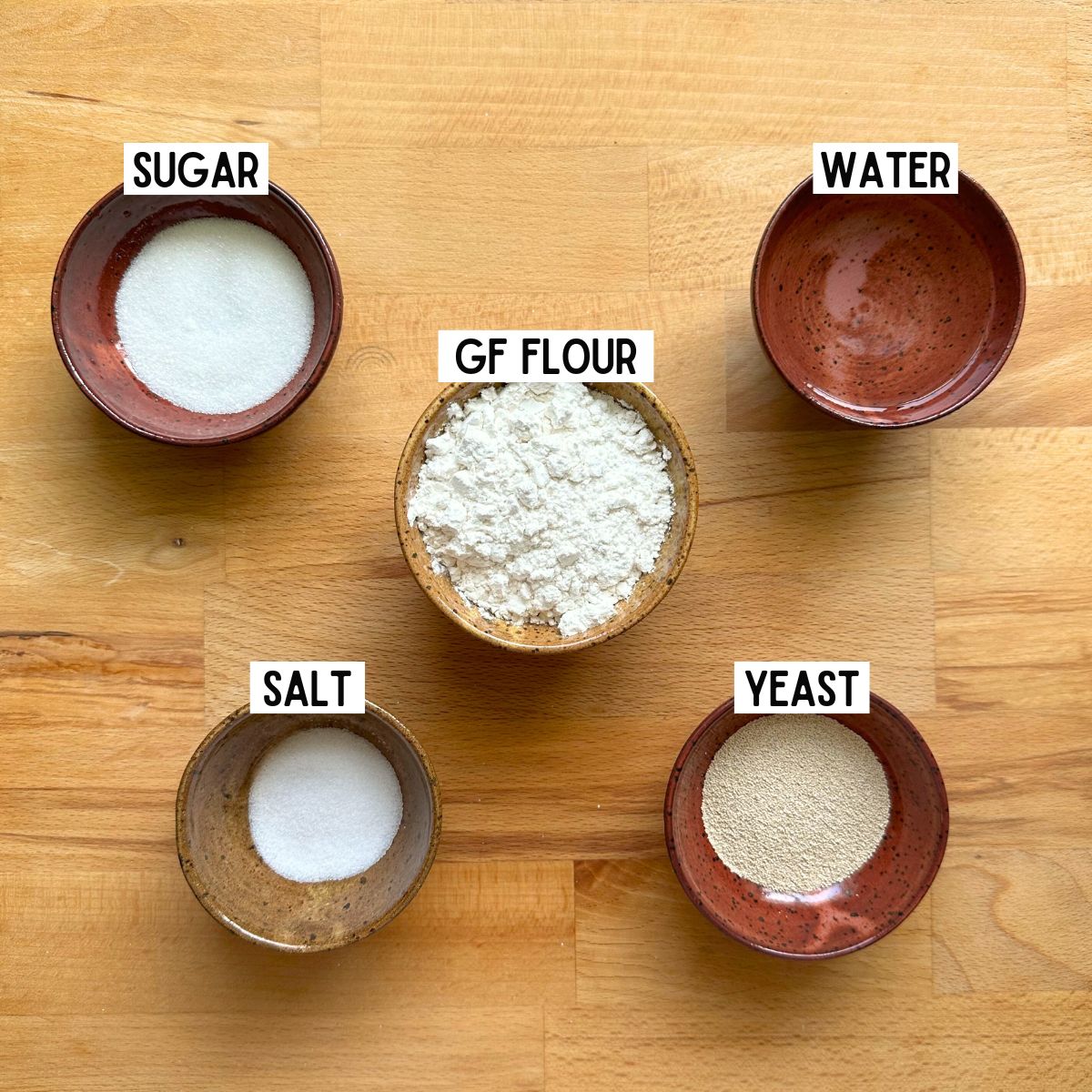
- Gluten-Free Bread Flour - I tested this recipe with King Arthur ‘00’ Neapolitan-Style Gluten-Free Pizza Flour. A standard gluten-free flour blend would not work because this blend includes psyllium fiber, inactive yeast, and xanthan gum.
- Granulated Sugar
- Salt
- Instant Yeast
- Water
- Olive Oil
Please refer to the recipe card below for the full list of ingredients and detailed instructions.
How to Make Gluten-Free Pizza Crust
Here’s a step-by-step guide to making the best gluten-free pizza crust:
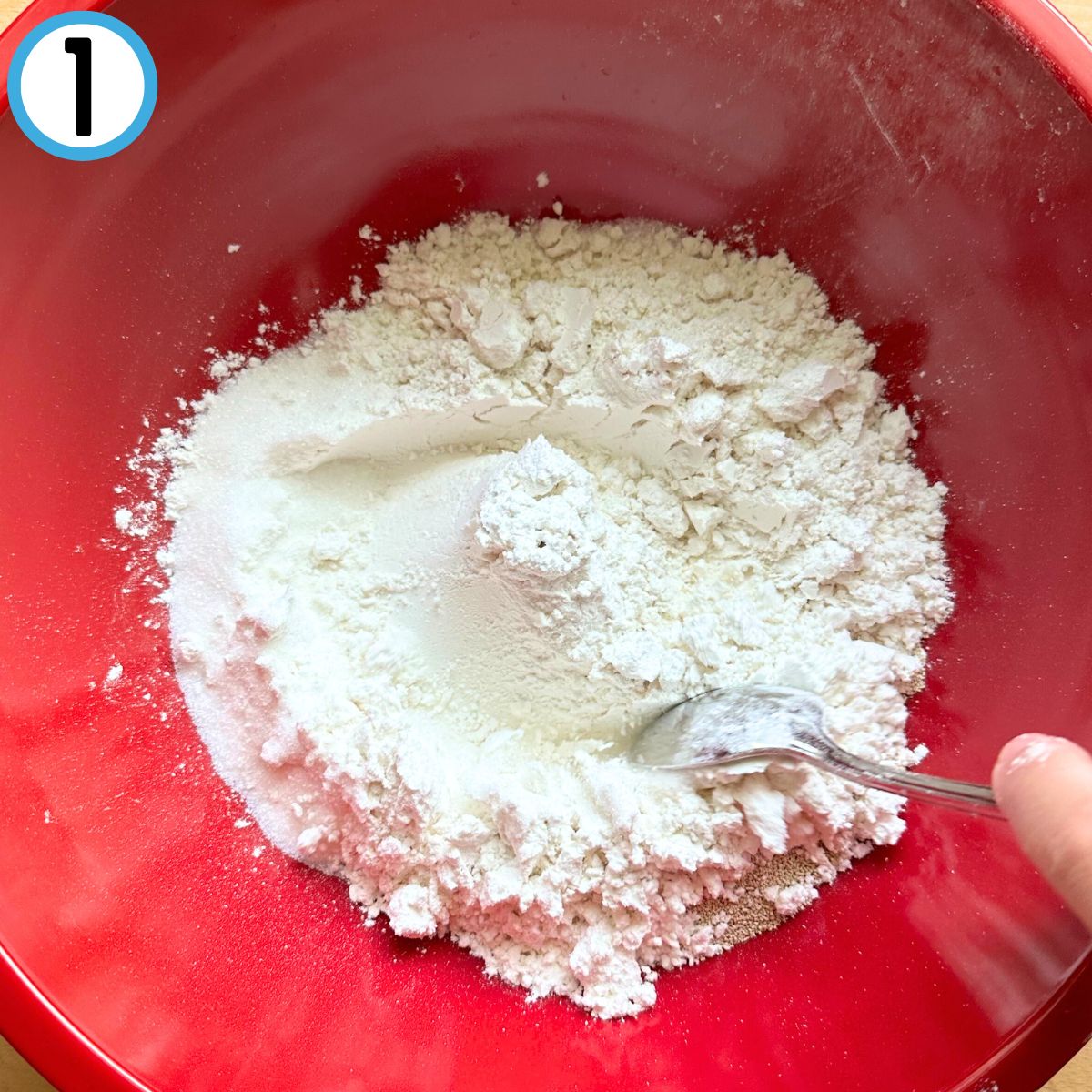
- Mix the dry ingredients in a large bowl.
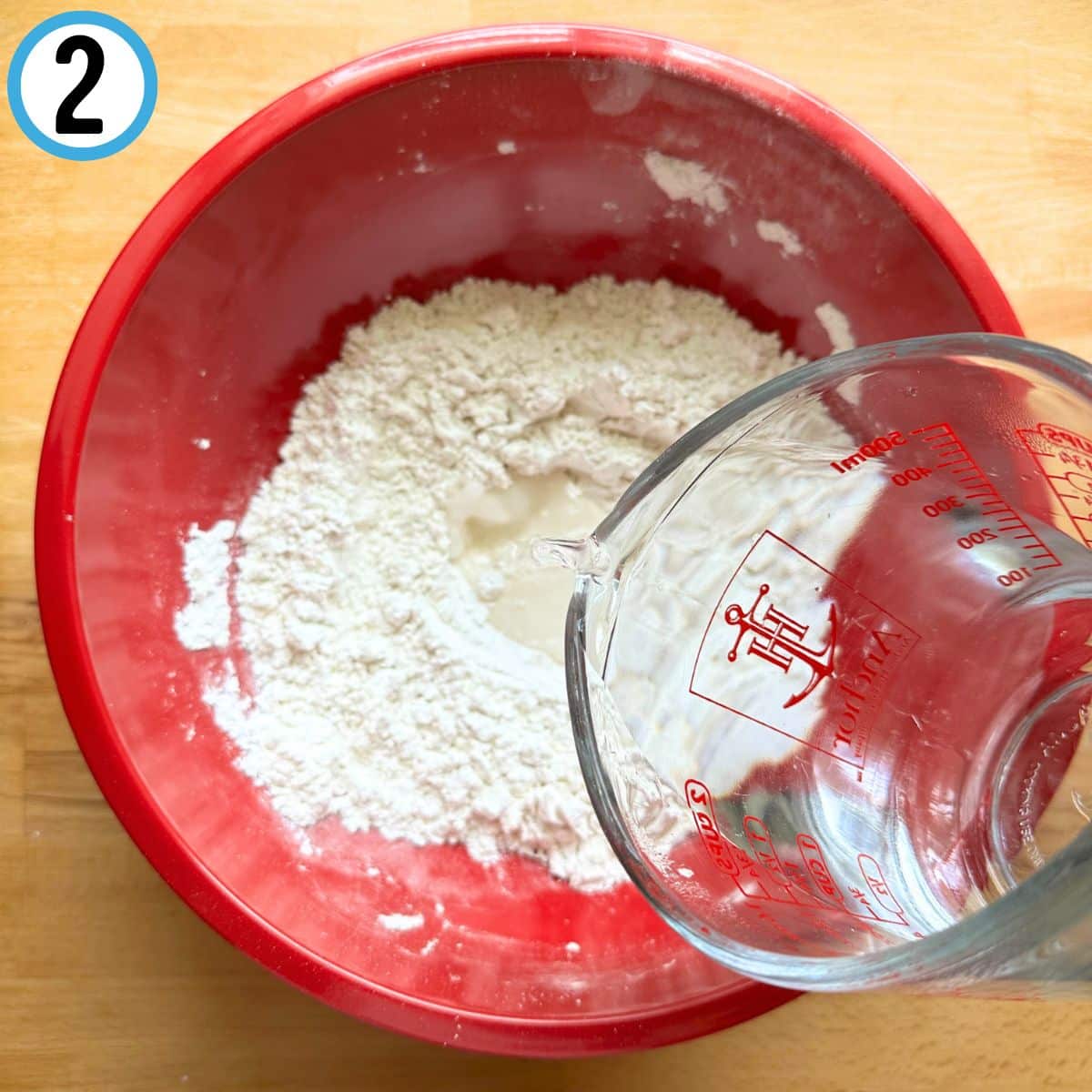
- Form a well and add the water to the dry ingredients.
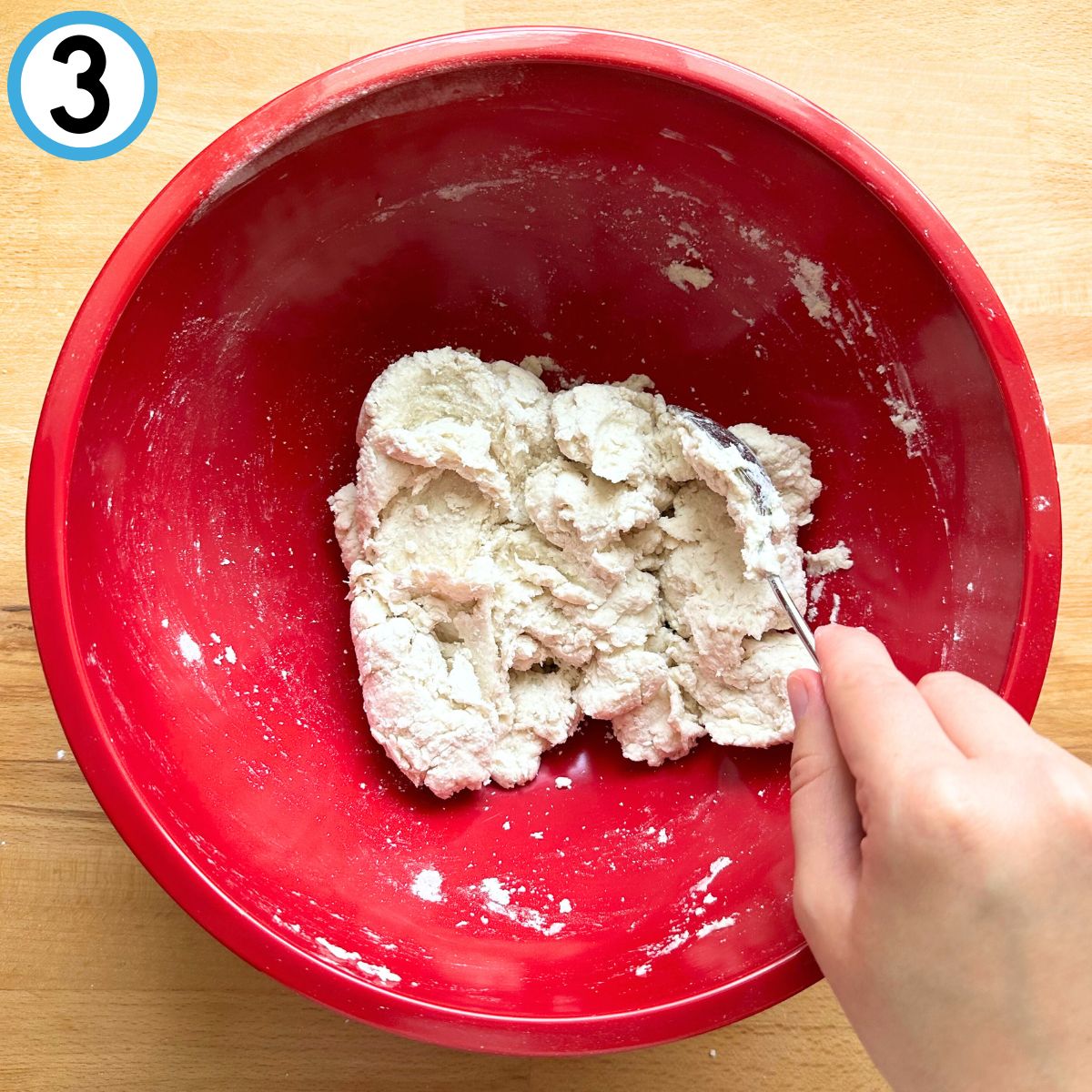
- Mix to form a rough dough.
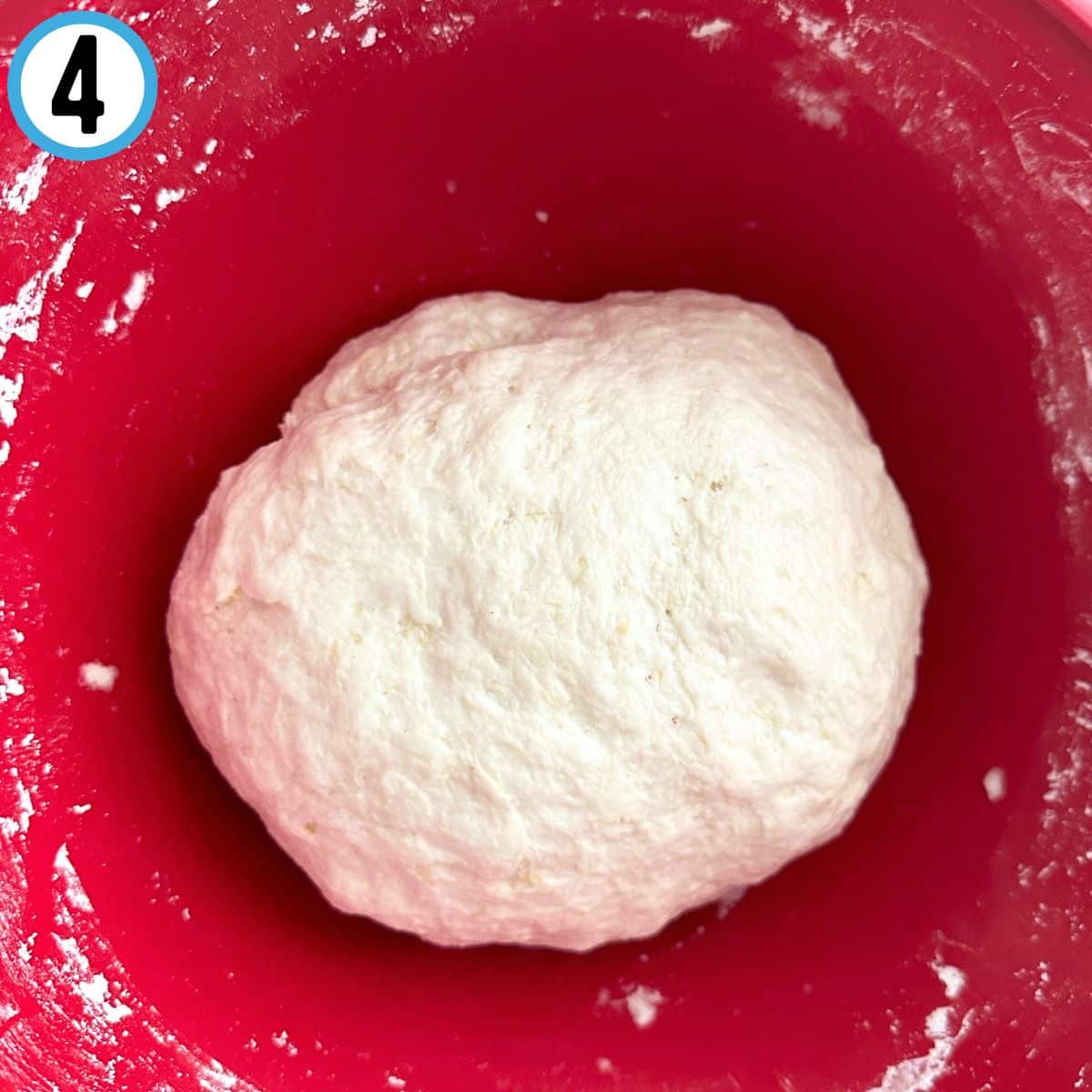
- Knead the dough until it is smooth, then let it rise.
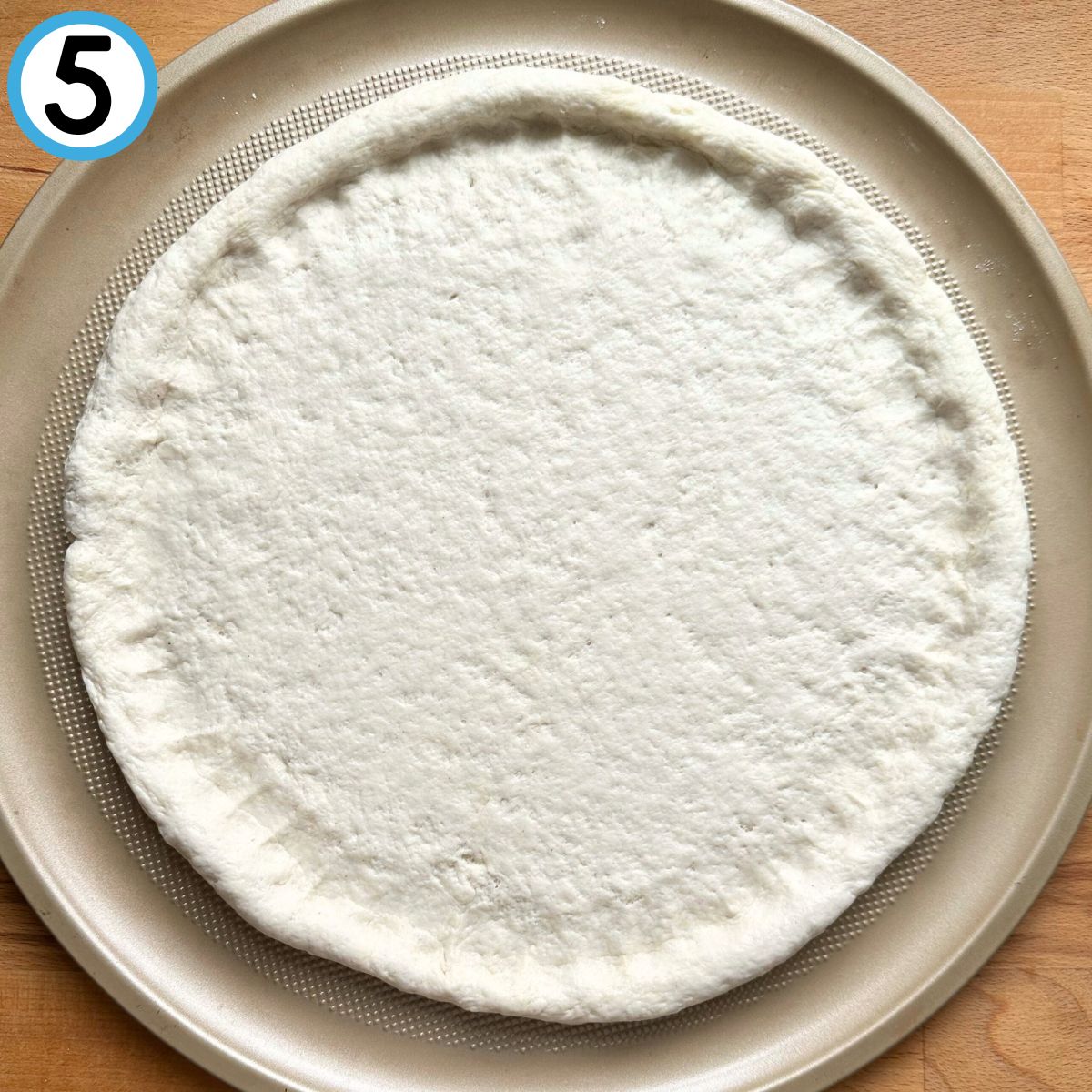
- Roll out the dough into an even circle.
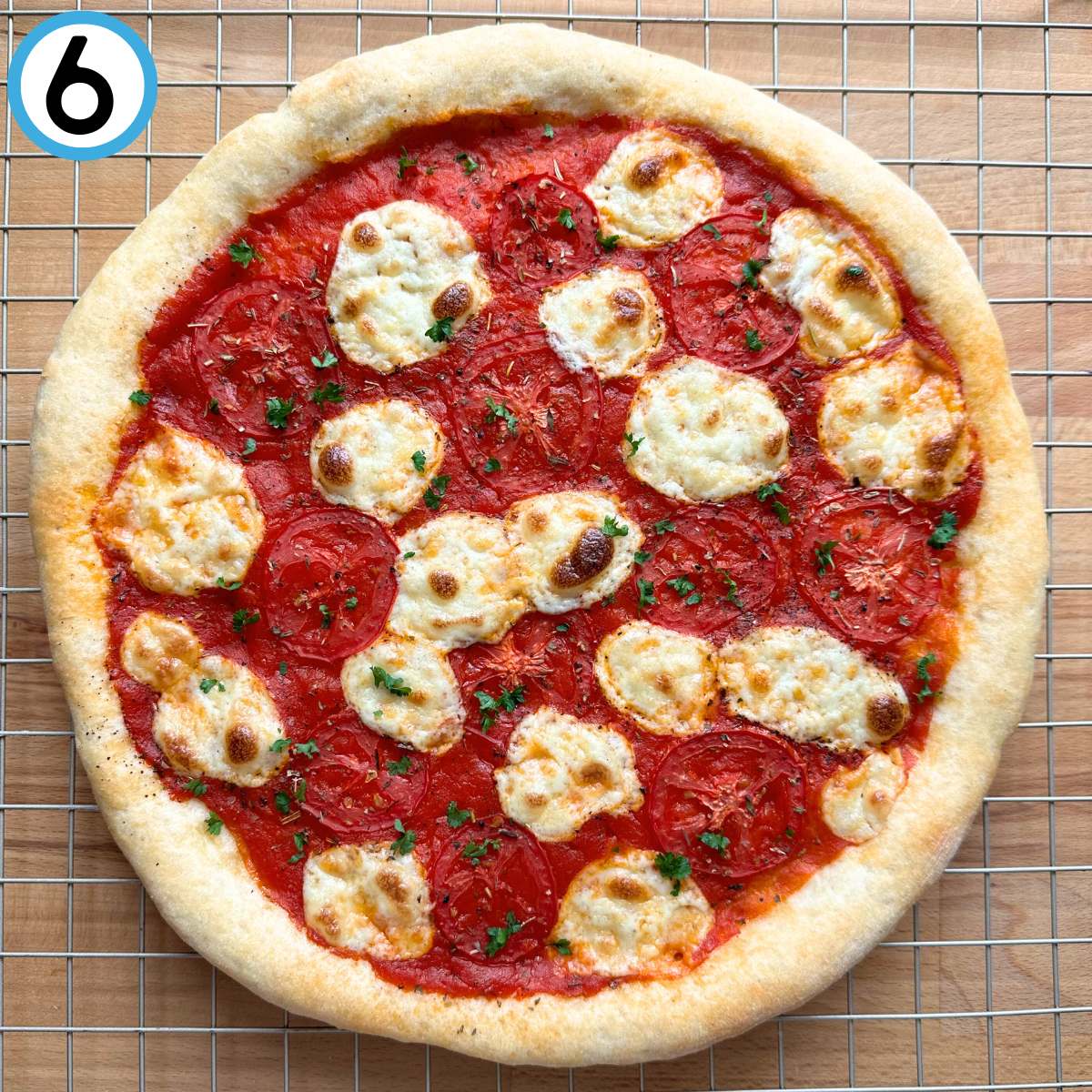
- Add your favorite toppings, then bake.
Top Tips
Kneading the Dough - Kneading the dough right inside the bowl works best. With gluten-free bread, the dough often requires more water to help moisten all of the “flour”. The pizza dough will be a bit wetter than a traditional pizza dough.
Letting the Dough Rise - Let the dough rise first at room temperature then in the refrigerator. We’re working with gluten-free flour which needs extra time to fully hydrate. This gives the gluten-free crust the perfect texture.
Baking the Pizza Crust - With this recipe you do not need to prebake the crust. Just add all your favorite toppings at once and bake until golden brown and crisped on the outside. Brushing a little olive oil or melted vegan butter onto the dough just before you bake it gives a nice golden crust.

Pizza Topping Ideas
Here are a few topping combinations to try out:
- Cashew mozzarella + sliced tomatoes + basil
- Vegan pesto + spinach + broccoli + vegan parmesan
- Buffalo chickpeas + vegan ranch dressing
- BBQ sauce + pineapple + red bell pepper
Check out pita bread pizza and quinoa pizza for more pizza topping ideas!
Storage & Reheating
Store leftover gluten-free pizza in an airtight container in the refrigerator for 2 to 3 days. Reheat leftover pizza in the oven or air fryer at 350°F for 3 to 5 minutes.

More Vegan Pizza Recipes
Did you make this recipe?
Please leave a rating and tell us how you liked it!
📖 Recipe

Gluten-Free Pizza Crust
Ingredients
- 2 cups gluten-free pizza flour
- 1 tablespoon granulated sugar
- 1 teaspoon salt
- 2 teaspoon instant yeast
- 1 cup warm water plus 2 tablespoons
- olive oil for brushing on top
Instructions
- Mix all the dry ingredients in a bowl.
- Form a well and add the water to the dry ingredients.
- Mix everything to form a rough dough.
- Knead the dough inside the bowl until it is smooth.
- Add a drizzle of olive oil to the bowl and spread it over the dough.
- Cover and let the dough rest for 1 hour to rise at room temperature and then an additional 30 minutes in the refrigerator.
- Roll out the dough into an even circle directly on your pizza pan or stone.
- The pizza should be about 12” in diameter. Push the edges of the dough to form a thicker crust, or roll it out even more for a thin and crispy crust.
- Add your favorite toppings, then bake at 500°F for 14 to 16 minutes.
Notes
Nutrition
This recipe has been updated with new pictures and tips. It was adapted from Maggie's recipe that was posted on March 5, 2019.



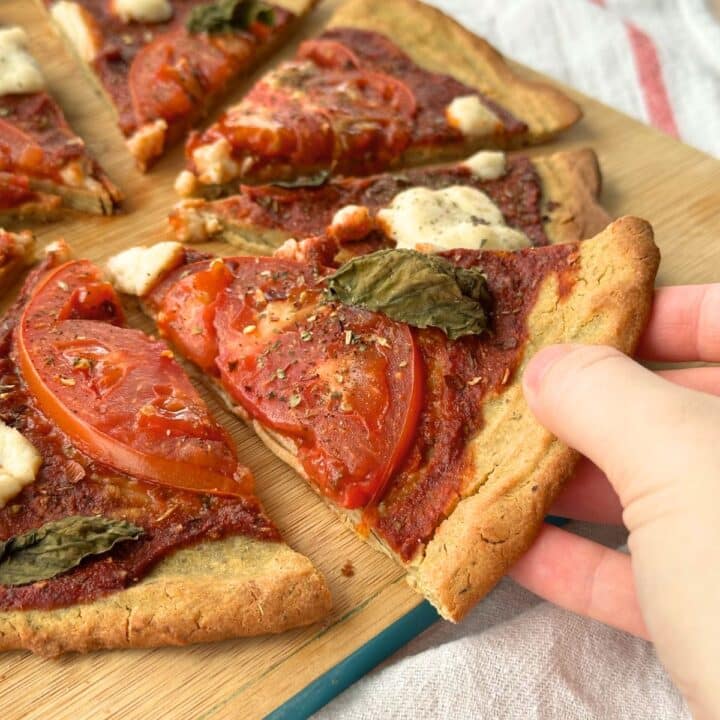
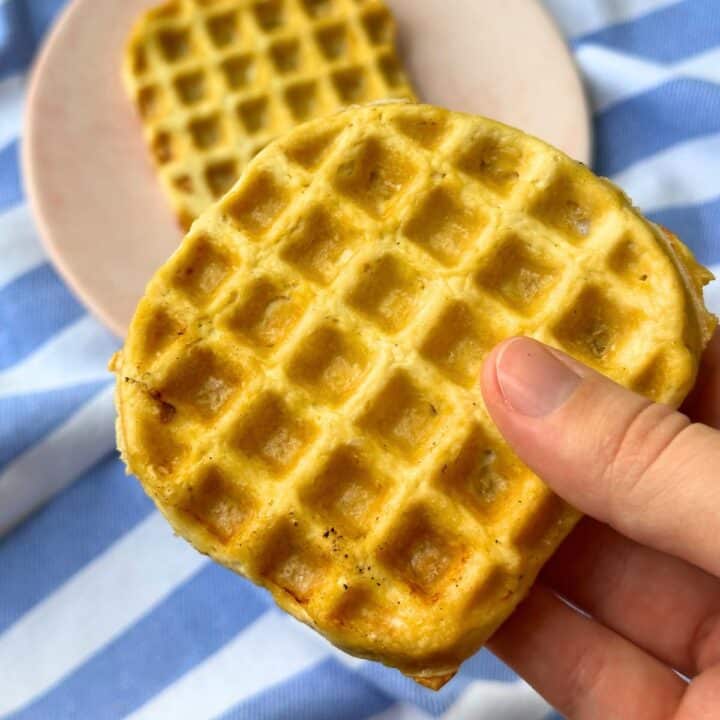
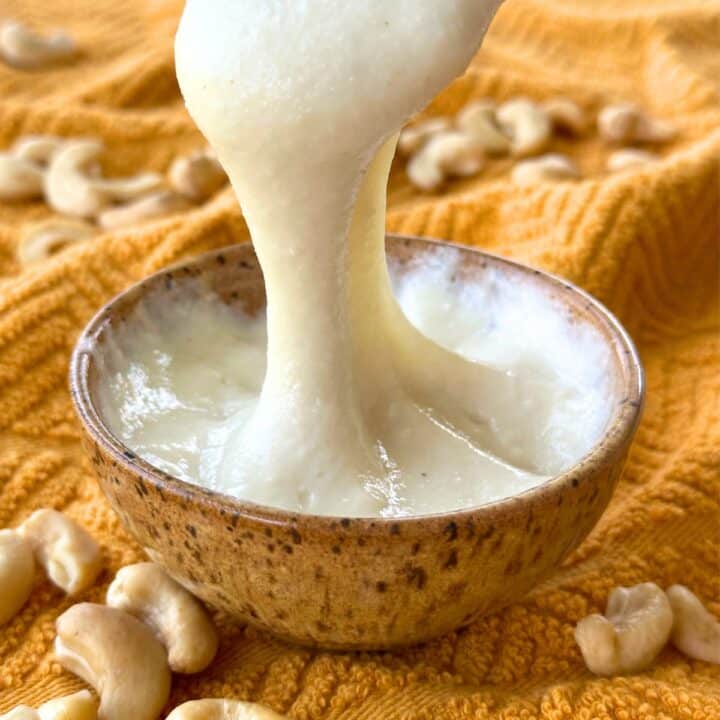

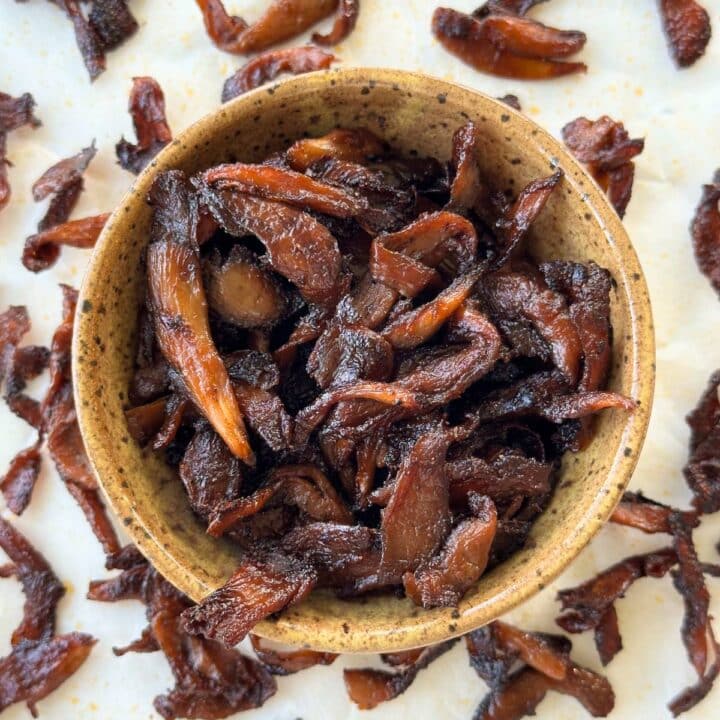
Kimbra Wellnitz says
Seriously easy to make and shockingly delicious! Doesn't matter if your vegan or gluten-free...a spectacular crust!
Abigail says
hi thank you for the recipe! do you know if I can easily double this recipe and freeze the other dough (without toppings) but it would probably be after the initial bake, yes?
Sarah Pilley says
Hi Kimbra! You should be able to freeze it, although I haven't tested that yet. I would recommend prebaking it and cooling it before freezing.
Hana says
Hi,
Do you know if this would work without the tapioca starch?
Maggie says
Hi Hana, probably not. It helps hold it together and makes it chewier. You could also use corn starch or arrowroot starch in place of the tapioca.